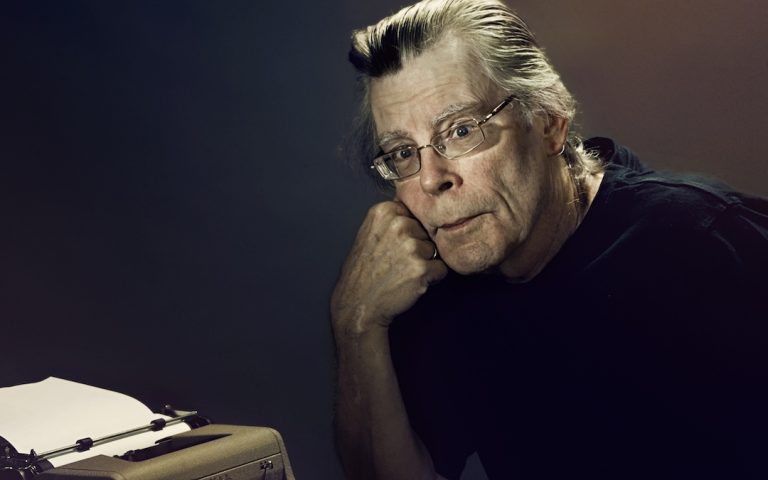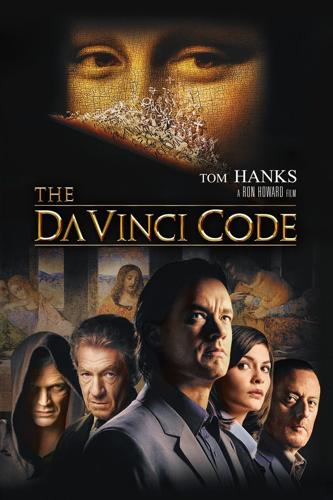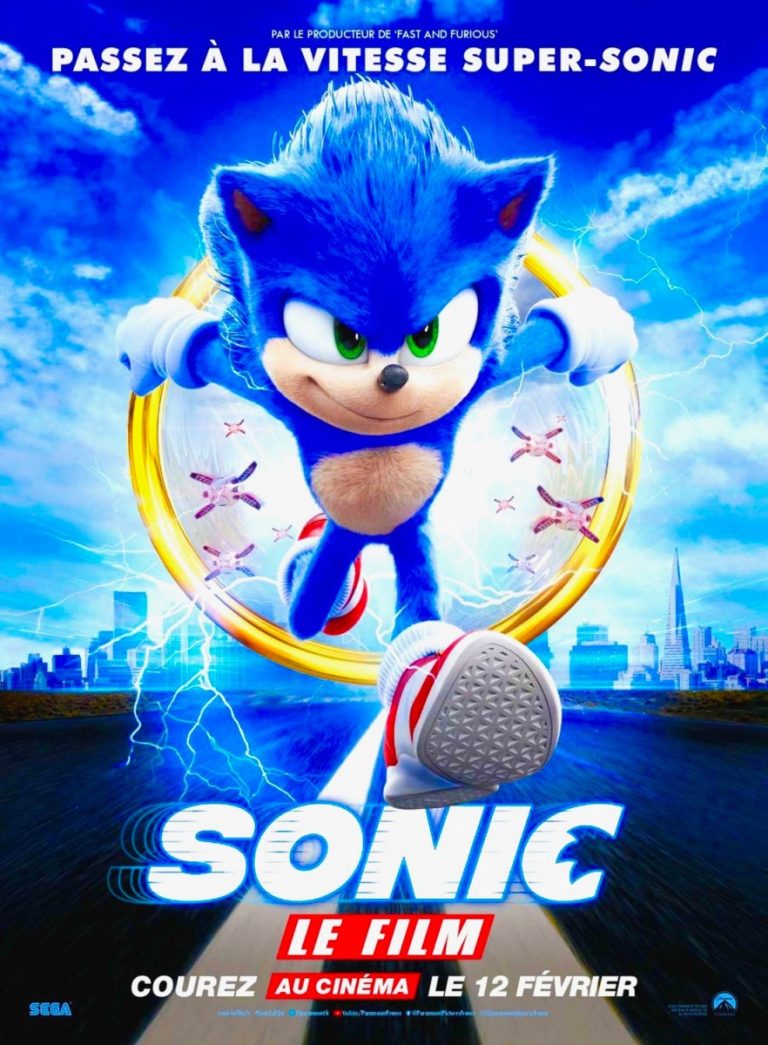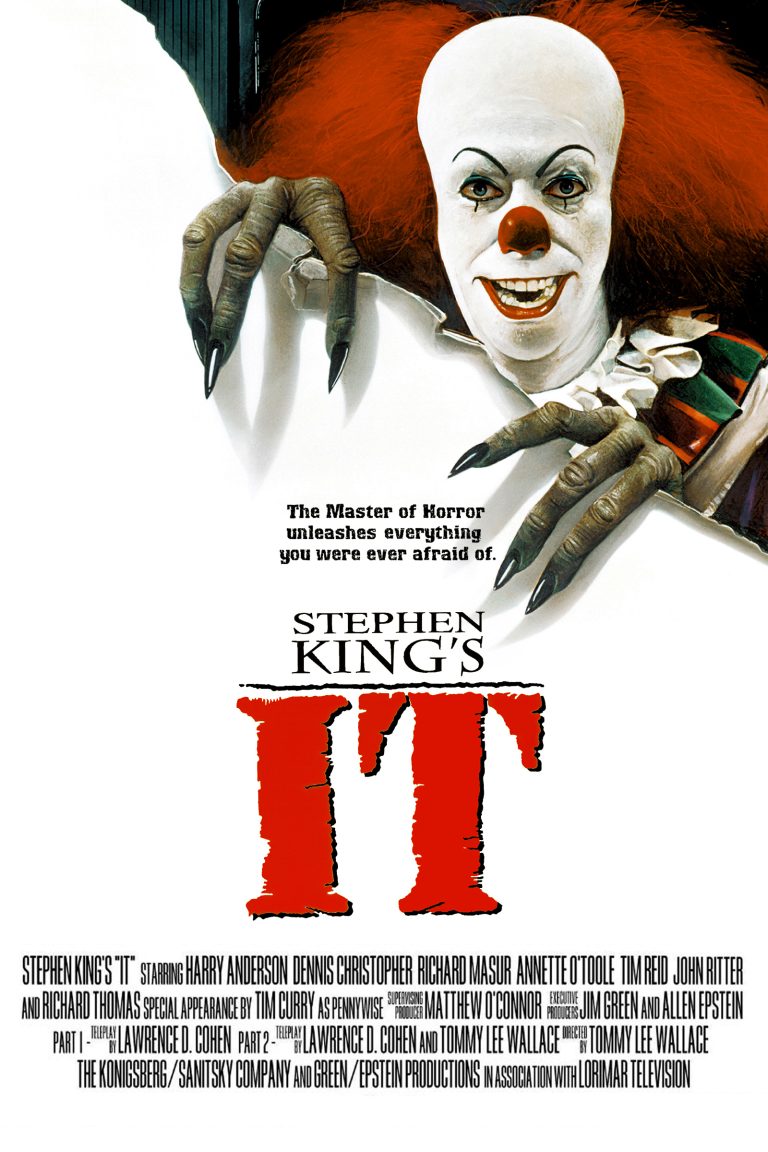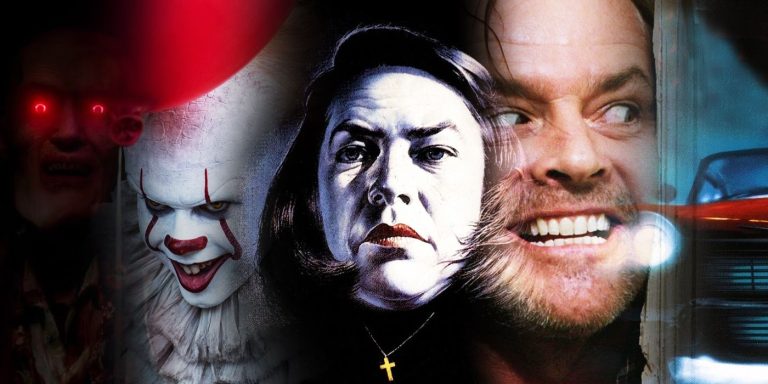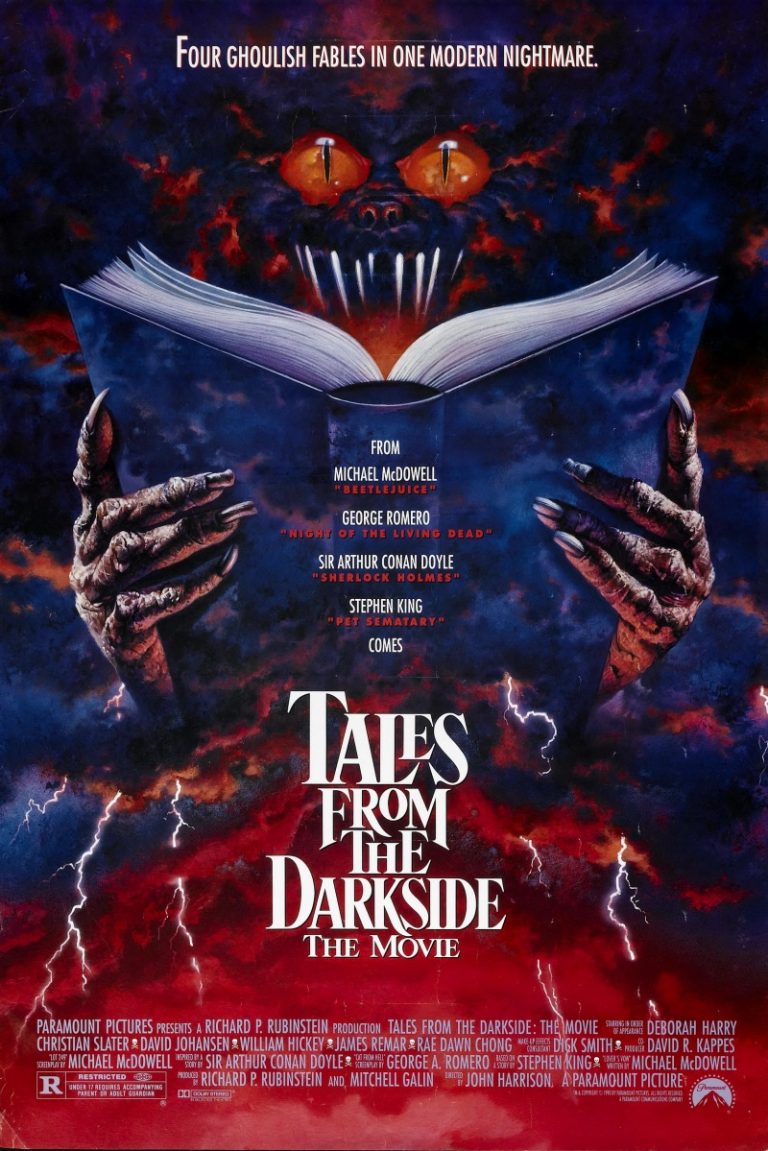The Ultimate Guide To Stephen King Movie Fan Theories
Welcome, fellow Stephen King enthusiasts, to “The Ultimate Guide to Stephen King Movie Fan Theories”! Prepare to dive deep into the twisted and mysterious world of Stephen King’s cinematic adaptations, where nothing is as it seems and every scene holds a hidden clue. From the chilling horrors of “The Shining” to the supernatural powers of “Carrie,” we’re about to explore the fan theories that will leave you questioning everything you thought you knew about these iconic films.
Now, don’t worry if you’re new to the world of Stephen King or if you’re a seasoned fan who has devoured every book and movie adaptation. This guide is designed to captivate and engage readers of all levels of familiarity with King’s works. We’ll unravel the secrets behind some of the most popular fan theories, discussing the symbolism, Easter eggs, and hidden meanings that make these movies so captivating.
So, grab your popcorn and get ready for a mind-bending journey through the dark and twisted minds of Stephen King and his devoted fans. Together, we’ll uncover the mysteries lurking beneath the surface of these iconic films and discover the true meaning behind the master of horror’s most beloved stories. Get ready to have your mind blown as we delve into “The Ultimate Guide to Stephen King Movie Fan Theories.”
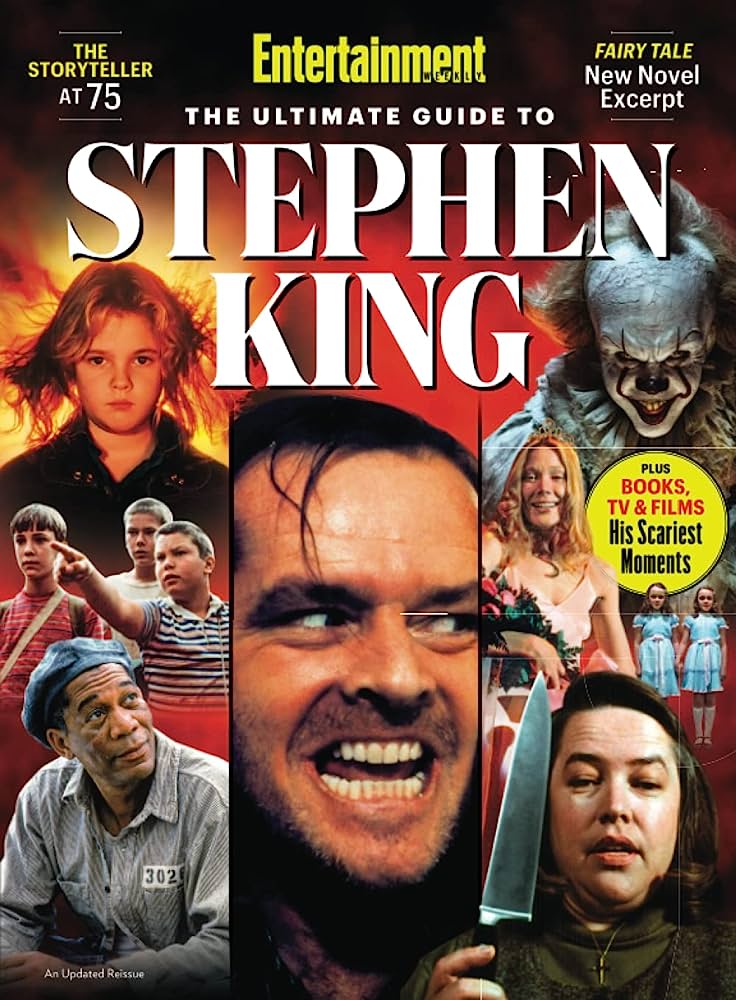
The Ultimate Guide to Stephen King Movie Fan Theories
Stephen King is a master of horror and suspense, and his novels have been adapted into countless movies that have captivated audiences around the world. But beyond the scares and thrills, there is a whole world of fan theories surrounding King’s works. In this ultimate guide, we will delve into some of the most intriguing and mind-bending fan theories related to Stephen King movies. Get ready to explore the depths of the Stephen King universe and uncover the hidden connections and secrets that fans have uncovered over the years.
The Multiverse Theory and Stephen King
One of the most fascinating aspects of Stephen King’s works is the interconnectedness of his stories. Many of his novels and short stories take place in the same universe, with characters and events overlapping and intertwining. This has led fans to develop the multiverse theory, which suggests that all of King’s stories exist within a larger, interconnected universe. According to this theory, characters from one story can cross over into another, and events in one book can have ripple effects in others.
One of the key pieces of evidence for the multiverse theory is the recurring presence of the Dark Tower, a central element in many of King’s works. The Dark Tower serves as a hub for the different dimensions and realities within the Stephen King universe. It is a place where various characters and storylines converge, creating a complex web of connections and possibilities.
The Overlapping Characters and Easter Eggs
A major aspect of the multiverse theory is the presence of overlapping characters and Easter eggs in Stephen King movies. Fans have noticed that certain characters and elements from one story will make appearances or be referenced in other movies, creating a sense of continuity and shared universe. These Easter eggs can be as subtle as a character name or as overt as a direct reference to a previous story.
For example, one of the most famous Easter eggs in Stephen King movies is the presence of the fictional town of Castle Rock. Castle Rock serves as the setting for many of King’s stories, and it has appeared in multiple adaptations, including “Stand by Me” and “Cujo.” This recurring location not only adds depth and familiarity to the movies but also reinforces the idea that all of these stories are connected.
The Pennywise Connection
Another intriguing fan theory revolves around Pennywise, the iconic clown from King’s novel “It.” According to this theory, Pennywise is not just a single entity but rather a manifestation of a greater cosmic force. This force, known as the Macroverse, exists beyond the boundaries of our reality and is connected to other dimensions and universes. Pennywise is merely one form that this force takes in order to feed on the fear of its victims.
This theory is supported by the presence of the Turtle, a cosmic entity mentioned in “It” that represents the opposite of Pennywise. The Turtle is said to have created our universe and stands against the destructive force embodied by Pennywise. This duality suggests a larger cosmic struggle between good and evil that extends beyond the confines of a single novel or movie.
The Shining and Its Hidden Meanings
“The Shining” is one of Stephen King’s most iconic novels, and its film adaptation by Stanley Kubrick is considered a masterpiece of horror cinema. But beyond the surface-level scares, “The Shining” is filled with hidden meanings and symbolism that have sparked numerous fan theories and interpretations.
The Moon Landing Theory
One of the most controversial and intriguing theories surrounding “The Shining” is the moon landing theory. This theory suggests that Stanley Kubrick, who directed the film adaptation of “The Shining,” embedded subtle clues and symbolism throughout the movie to reveal his involvement in faking the moon landing footage for NASA. According to this theory, “The Shining” is Kubrick’s confession, filled with hidden messages and references to the moon landing hoax.
Supporters of this theory point to various details in the movie, such as the Apollo 11 sweater worn by Danny, the film’s young protagonist, and the layout of the Overlook Hotel, which resembles a launchpad. While it’s unlikely that this theory holds any truth, it has nevertheless captured the imagination of fans and sparked countless debates and discussions.
The Symbolism of the Maze
Another fascinating aspect of “The Shining” is the symbolism of the maze. In the film, the Overlook Hotel is portrayed as a labyrinthine structure with a hedge maze in its grounds. This maze serves as a metaphor for the labyrinth of the human mind and the internal struggles faced by the characters.
The maze also represents the isolation and confinement experienced by the Torrance family as they become trapped within the hotel. It symbolizes their descent into madness and the maze-like nature of their own psyches. The use of the maze as a recurring motif adds depth and complexity to the story, inviting viewers to explore the hidden meanings and psychological depths of “The Shining.”
The Dark Tower: The Key to All Connections
The Dark Tower series, written by Stephen King, serves as the linchpin of the Stephen King universe. It brings together the various dimensions, characters, and storylines into a cohesive and interconnected narrative. The series follows the journey of Roland Deschain, the last gunslinger, as he seeks to reach the Dark Tower and save his dying world.
Throughout the Dark Tower series, Stephen King includes references and connections to his other works, reinforcing the idea that everything is part of the same universe. Characters from different novels, such as “The Stand” and “Insomnia,” make appearances, and events from other stories are mentioned or alluded to. This rich tapestry of connections and interweaving narratives has captivated fans and solidified the multiverse theory.
The Crimson King and the Forces of Evil
At the heart of the Dark Tower series is the conflict between the Crimson King and the forces of good represented by Roland Deschain and his companions. The Crimson King is a malevolent entity who seeks to bring about the destruction of the Dark Tower and plunge the universe into chaos.
The Crimson King serves as a recurring antagonist throughout many of Stephen King’s works, making appearances in novels such as “Insomnia” and “The Eyes of the Dragon.” This connection between the Dark Tower series and other stories further supports the idea of a shared universe and reinforces the importance of the Dark Tower as a central element in the Stephen King universe.
The Role of Ka
In the Dark Tower series, the concept of Ka plays a central role. Ka is a force or destiny that guides the characters and shapes their actions. It represents the idea that there is a greater plan or purpose at work in the universe, and the characters are merely players in a larger cosmic game.
The concept of Ka extends beyond the Dark Tower series and is referenced in other Stephen King novels. It adds a layer of depth and meaning to the interconnectedness of the Stephen King universe, suggesting that events and characters are not simply random occurrences but part of a grand design.
Intriguing Fan Theories and Stephen King
Stephen King’s works have inspired countless fan theories and discussions, showcasing the depth and complexity of his storytelling. From the multiverse theory to hidden meanings in “The Shining” and the interconnectedness of the Dark Tower series, fans have delved deep into the world of Stephen King and uncovered hidden connections and secrets.
As fans continue to analyze and interpret Stephen King’s works, new theories and insights will undoubtedly emerge. The beauty of these fan theories is that they invite readers and viewers to engage with the stories on a deeper level and make their own connections. Whether you’re a long-time fan or new to the world of Stephen King, exploring these fan theories adds an extra layer of excitement and intrigue to his beloved movies. So, grab your popcorn, turn off the lights, and prepare to dive into the fascinating world of Stephen King movie fan theories.
Key Takeaways: The Ultimate Guide to Stephen King Movie Fan Theories
- Stephen King’s movies have sparked numerous fan theories that add depth and intrigue to his stories.
- Fan theories often explore hidden connections between different Stephen King movies and books.
- Some fan theories suggest that all of Stephen King’s stories exist within the same universe.
- The “IT” franchise is a common subject of fan theories, with discussions about Pennywise’s origins and true nature.
- Fan theories can enrich the viewing experience by offering new perspectives and interpretations of Stephen King’s works.
Frequently Asked Questions
1. What are some popular Stephen King movie fan theories?
Stephen King movies have inspired a plethora of fan theories over the years. One popular theory revolves around the interconnectedness of King’s fictional universe. Fans believe that many of his stories are linked through subtle references and shared themes, creating a shared universe similar to the Marvel Cinematic Universe. Another theory suggests that Pennywise, the terrifying clown from “It,” is actually a manifestation of a cosmic entity known as the Turtle, which is mentioned in other King novels. Additionally, fans have speculated about the true nature of the Overlook Hotel in “The Shining,” with theories ranging from it being a purgatory for lost souls to a physical manifestation of Jack Torrance’s own personal demons.
While these theories may not be confirmed by Stephen King himself, they add an extra layer of intrigue and excitement to his already captivating stories.
2. Is there a connection between the Dark Tower series and other Stephen King movies?
Yes, there is a strong connection between the Dark Tower series and other Stephen King movies. The Dark Tower series serves as the epicenter of King’s fictional universe, connecting many of his other novels and stories. The series follows the Gunslinger Roland Deschain as he journeys through a post-apocalyptic world in search of the Dark Tower, which holds the key to saving all of existence.
Throughout the Dark Tower series, references and characters from other Stephen King novels make appearances, further solidifying the interconnected nature of his works. For example, the character of Randall Flagg, a recurring antagonist in King’s novels, appears in both the Dark Tower series and “The Stand.” These connections not only enhance the reading experience for fans but also provide a deeper understanding of the intricate tapestry that Stephen King has woven.
3. What is the significance of the number 19 in Stephen King’s works?
The number 19 holds significant meaning in many of Stephen King’s works. It is believed to represent a recurring theme of fate and destiny. In the Dark Tower series, the number 19 is considered a powerful and magical number, often associated with the Tower and its guardians. It is said that those who are touched by the number 19 are destined to play a pivotal role in the events surrounding the Tower.
In other works, such as “The Shining” and “It,” the number 19 appears in various contexts, hinting at the presence of supernatural forces and hidden connections. Fans have also noted that Stephen King himself was born on September 21st, which can be reduced to 19 (9+2+1). This has led to speculation that the number holds personal significance for the author and has been woven into his stories as a subtle nod to his own life.
4. What is the theory behind the recurring town of Derry in Stephen King’s novels?
Derry, Maine is a fictional town that serves as the setting for several of Stephen King’s novels, including “It,” “Insomnia,” and “Dreamcatcher.” One theory suggests that Derry is a nexus of supernatural activity, drawing in dark forces and attracting various forms of evil. This theory is supported by the recurring presence of Pennywise the clown, who preys on the town’s children every 27 years.
Another theory proposes that Derry is a manifestation of Stephen King’s own fears and anxieties, serving as a symbolic representation of the darkness that resides within all of us. This idea is reinforced by the recurring themes of trauma, childhood trauma, and the power of fear that permeate King’s works set in Derry. Overall, the town of Derry remains a fascinating and haunting aspect of Stephen King’s fictional universe.
5. Are there hidden connections between Stephen King’s novels and their film adaptations?
Yes, there are often hidden connections between Stephen King’s novels and their film adaptations. While not all film adaptations include these connections, many filmmakers have taken inspiration from King’s interconnected universe and incorporated subtle nods and references into their movies.
For example, the film adaptation of “The Shawshank Redemption” includes a brief reference to the fictional town of Castle Rock, which serves as the setting for several of King’s stories. Additionally, the film version of “The Dark Tower” features numerous Easter eggs and references to other Stephen King works, further cementing its place within the broader fictional universe.
8 Stephen King Movie Fan Theories That Will Blow Your Mind
Final Summary: Unraveling the Mysteries of Stephen King Movie Fan Theories
After diving deep into the world of Stephen King movie fan theories, we’ve uncovered a treasure trove of speculation and imagination. From the eerie connections between different films to the hidden Easter eggs scattered throughout, it’s clear that King’s storytelling has captivated fans and sparked their imaginations. As we conclude our ultimate guide, let’s take a moment to reflect on the fascinating journey we’ve embarked upon.
Throughout this exploration, we’ve witnessed the power of fan theories in enhancing our appreciation for Stephen King’s cinematic universe. These theories not only provide new perspectives but also allow us to engage in a communal experience, connecting with fellow enthusiasts who share our love for King’s work. It’s truly remarkable how a simple scene or a subtle reference can ignite a multitude of interpretations and discussions.
In the end, the magic of Stephen King movie fan theories lies in their ability to keep the flame of curiosity burning bright. They remind us that the stories we love are not confined to the pages or the screen but expand into a realm of endless possibilities. So, whether you’re a die-hard fan or a casual viewer, keep your eyes peeled and your mind open, for the mysteries and wonders of Stephen King’s movies are always waiting to be unraveled.

